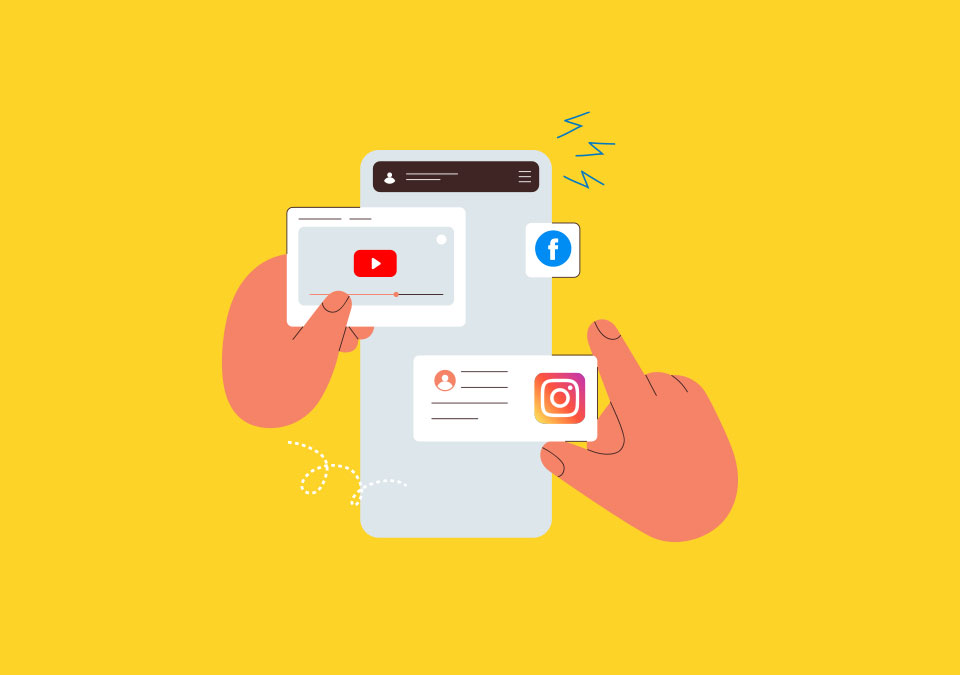Top 10 On-Page SEO Techniques to Drive Traffic in 2023

Categories:
Search Engine OptimizationIntroduction
When it comes to increasing the visibility and ranking of your website with organic results Google ranks your website and efforts down to three main factors:
- On Page SEO
- Off Page SEO
- Technical SEO
In this blog we will cover the top 10 proven methods to increase your website ranking and visibility of your website on any search engine.
Let’s first start with understanding the meaning of On Page SEO.
SEO optimization might seem intricate, but it’s manageable. Google evaluates over 200+ signals to help your website rank over search engines, while updating its algorithm on a yearly basis. Having said that, staying updated can be challenging. We’ve compiled a list of 10 crucial steps to keep in mind while optimizing your website for its on page activities.
Speaking of facts, not more than 75% of people browse through the first page of your website. On-page SEO basically means allowing Google to understand every piece of content, improving the content and layout of your website in such a way that it shows up higher in search engine results.
Understanding How On-Page SEO Works
On-page SEO is the practice of highlighting the best your website has to offer by means of improving your strongest suit in the form of key web pages to enhance search engine rankings. One of the two key SEO pillars, along with off-page SEO, is on-page optimization.
On-Page SEO Checklist Demystified

Speaking of facts, not more than 75% of people browse through the first page of your website, keeping that in mind here’s what a fine tuned On-Page SEO strategy is going to reward you with:
1. Enhanced Visibility
Following an on-page SEO checklist can really boost how often your website pops up on search engine results pages (those lists of links you see after searching). This happens because your website has a better chance of showing up when people search for certain words you’re aiming for.
2. Enhanced User Experience
A finely-tuned website is inherently more user-friendly, allowing increased traffic and engagement. This, in turn, has the potential to effectively help in moving up your search engine rankings.
3. Elevated Search Engine Rankings
Using an on-page SEO checklist can actually make your website look better to search engines. This means your site might rank higher over search results through building trust in the eyes of Google.
Top 10 On-Page SEO Techniques for 2023
Keyword Optimization
Keyword research is nothing but finding the right words people aka your target audience type into their search engines. For instance, a pet store might look up “healthy dog food” to improve website visibility and Google recognizes pet grooming supplies, pet toys as subtopics, In order to leverage the same make sure to use your select keywords in your content and make sure you’re showing up for the right things.
You don’t have to stress about finding these high quality keywords.
There are a number of tools, including Google Keyword Planner, SEMrush, and Ahrefs to make your work a lot easier. These tools will provide you with SERP insights for your desired keywords and how your competitor is using the same.
Here are some additional tips for keyword optimization:
- To use a mix of short and long-tail keywords across your website content.
- Try using synonyms and related keywords.
- Make use of keyword variations as a part of your strategy.
- Avoid keyword stuffing at all costs.

Creating Fresh Content
Currently, there are over 600 million blogs globally, which account for more than 6 million posts per day. It is easy to fall behind if you are not creating fresh content. Having fresh content not only helps you to optimize it for the best SEO practices but having up to date information also keeps users coming back for the latest info to your website or blog, they’re more likely to share it on social media or link to it from other websites as well. The end goal being the more you publish the more Google will index your site and your content will rank higher.
Here are a few more pointers on how to make content that really matches what users are looking for:
- Use clear and concise language.
- If your audience is unfamiliar with jargon and technical terms, avoid using them.
- To demonstrate your points of view, use examples and images.
- Be honest and transparent.
- Be responsive to feedback.
- Keep your content up-to-date.
Page Speed Optimization

The process of making web pages load faster is known as page speed optimization. It is critical for both the user experience and search engine rankings.
The impact of a website loading speed is directly proportional to the consumer satisfaction. The speed at which a page loads really matters for how users feel. If a page takes too much time to show up, people are more likely to give up and try another site instead. This could lead to losing out on visitors, sales, and money in the end.
Mobile-Friendly Design
In today’s day and age responsive design plays a crucial role and is widely used as a technique for building websites that function smoothly across a variety of platforms, including desktops, laptops, tablets, and smartphones. Even according to Google, mobile devices now account for more than half of all web traffic.
Here are some of the implications of Google’s mobile-first indexing:
- Websites that don’t work well on mobile devices might not show up high in search engine results.
- Websites that are not mobile-friendly will be more likely to be abandoned by mobile users.
- Websites lacking mobile-friendly features are poised to forfeit prospective traffic and conversions.
Internal and External Linking
Links are the only way we travel over the internet. Internal linking and external linking are both important for SEO. Internal linking is the practice of linking from one page on your website to another page on your website. External linking is the act of linking your website to another external website.
Here are some pointers on how to use anchor text effectively:
- Incorporate keywords into your anchor text. This aids search engines in comprehending your page’s topic and ranking it accordingly.
- Craft concise and succinct anchor text. Users have limited time to decide on clicking a link, so ensure the text is clear and quickly graspable.
Pay Attention to Featured Snippets
Featured snippets are special boxes that appear at the top of Google search results. They are designed to give users quick and easy access to information that they are looking for, While you can’t control what part of your content is highlighted in a snippet you surely can optimize it making it likely to appear in one.
EAT Principle
The SEO E-A-T principle emphasizes Expertise, Authoritativeness, and Trustworthiness. Search engines use these factors to determine the online reputation of your business, Moreover, your website design should foster visitor trust. In order to stay ahead of the competition make sure you practice EAT over the website in the form of testimonials, blogs, case studies and reviews. Furthermore, obtaining high quality links from other websites can improve your website’s search engine ranking and attract more visitors. Just remember that it takes time and effort to create high-quality content and a trustworthy website.
Don’t Forget About Images
Fun fact, search engines are unable to read images uploaded over your website, however this adage is especially true when it comes to on-page SEO. Images can help improve the ranking of a website over search engine results pages (SERPs), and can also help a website to rank for certain keywords.
There are a number of techniques you can use to compress images without sacrificing quality. Here are a few examples:
- Use a lossless compression format: Lossless compression formats, such as PNG, compress images without losing picture quality. This makes them an excellent choice for images that require high quality, such as product shots or photos furthermore explaining your user what the content stands for.
- Use a content delivery network (CDN): Photos contribute to 21% of the website’s loading weight. A CDN can help increase picture loading time by serving images from servers closer to your users by avoiding a bad user experience.
Url Structures
Want your website to shine on search engines? Nail those URLs! Short and sweet URLs catch both attention and secure top spots. Here a few suggestions to keep in mind
- Pop keywords in your URL for higher rankings.
- Snip that URL short – long ones get snubbed.
- Hyphens split words for easy reading and indexing.
- Skip special characters; they’re a search engine’s hiccup.
Keep A Close Eye On Your Website

Google Analytics a free web analytics service helps provide website owners with valuable insights into their website’s activity. Google Analytics helps website owners to track where their traffic is coming from, what pages are being viewed the most, and how long are visitors staying on their site. Additionally, Google Analytics can help website owners setup goal funnels and identify which keywords are driving traffic to their site while closely monitoring the same.
Conclusion
Streamline your on-page SEO efforts with our detailed checklist offered in the form of a detailed guide for optimizing your website for search engines. The checklist includes some of the most prompt on-page SEO strategies, and is continuously updated to reflect the most recent SEO trends for you. We hope this article has been helpful. If you have any questions, please feel free to ask or reach out to us.





